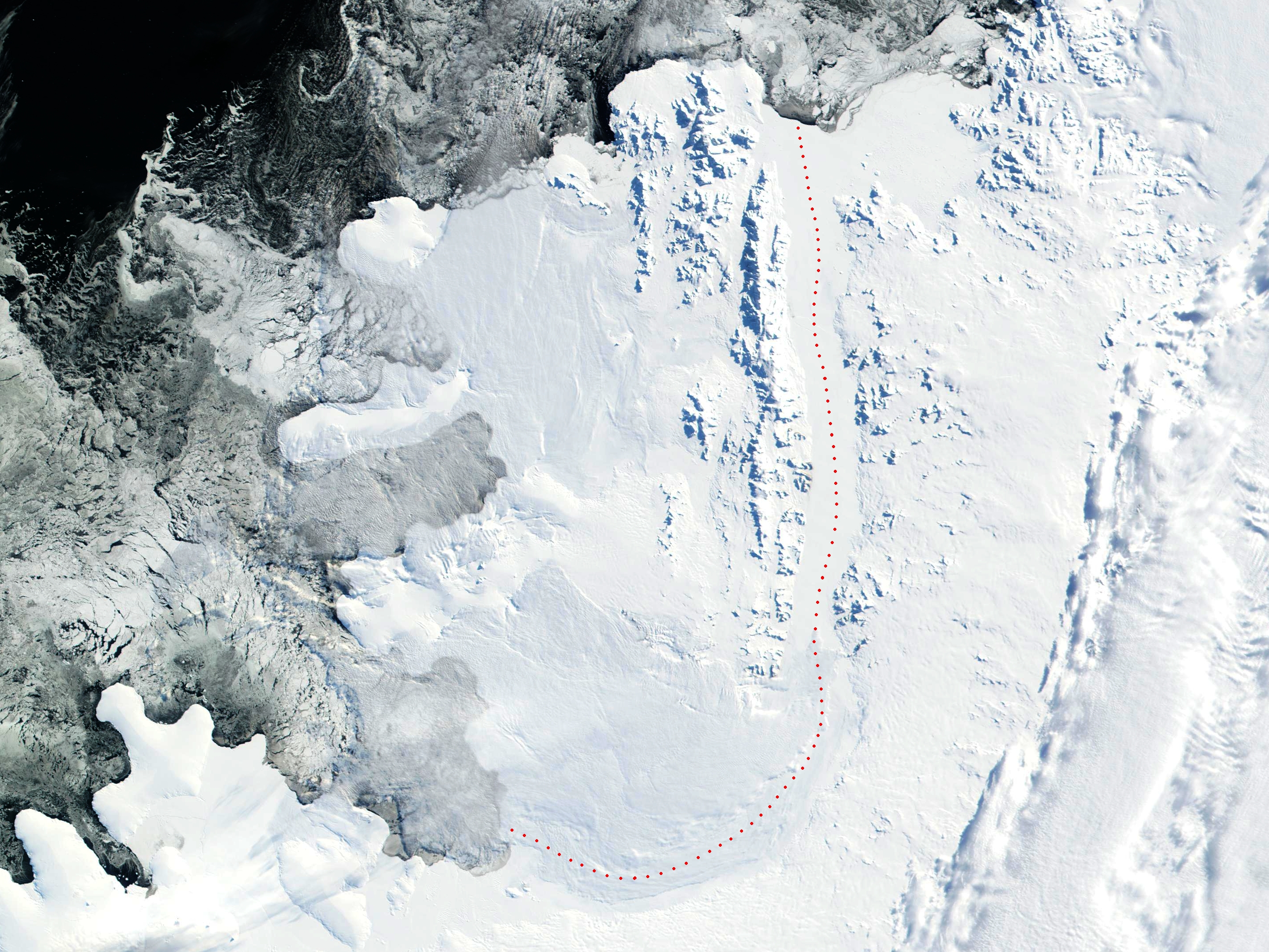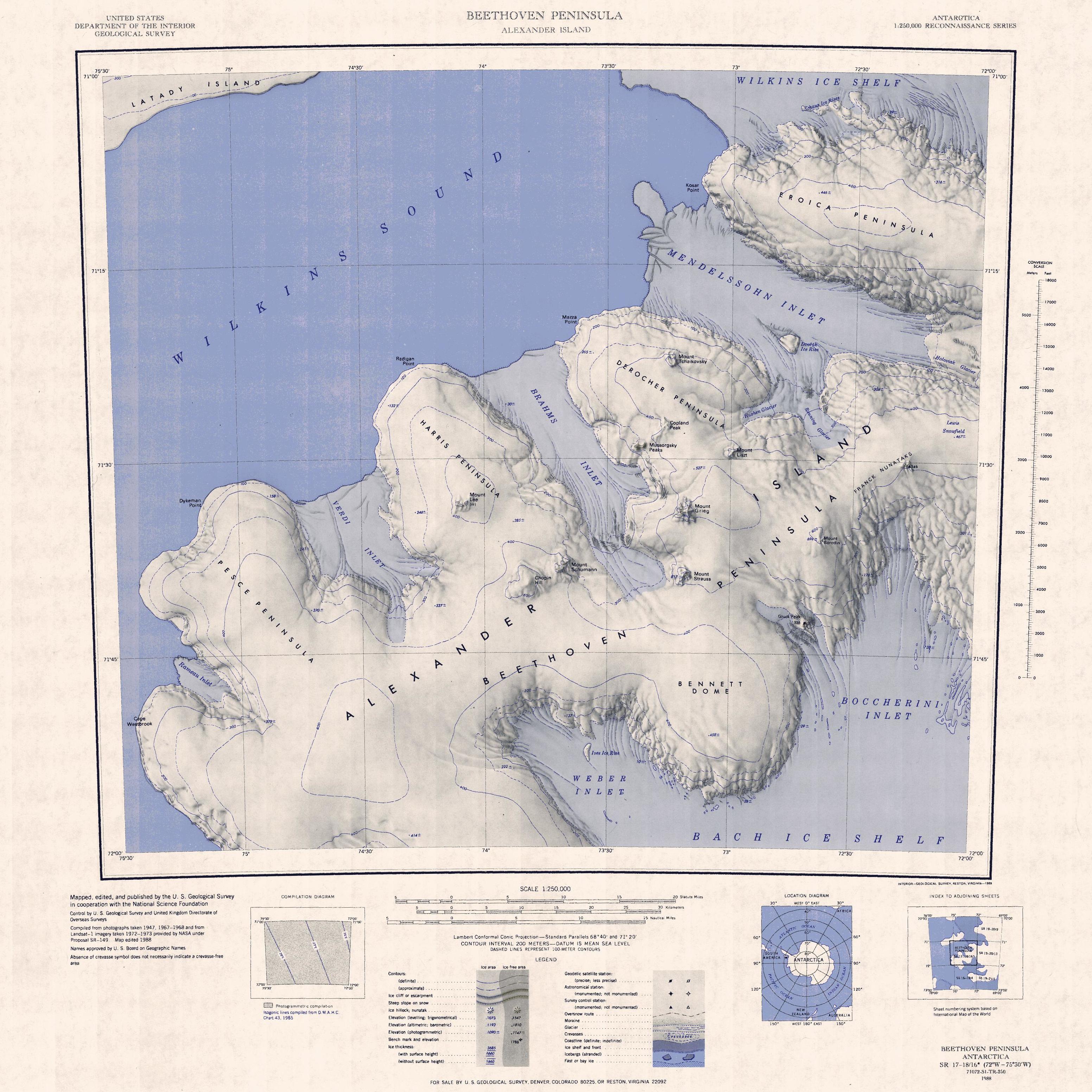|
Rameau Inlet
Rameau Inlet () is a partly ice-filled inlet located in southwest Alexander Island, Antarctica. The Inlet makes a large indent on the north side of the Beethoven Peninsula, lying between Pesce Peninsula and Cape Westbrook, marking the southwest extremity of Alexander Island. Delineated from U.S. Landsat imagery of January 29, 1973, by DOS. In association with names of composers in the area, named by United Kingdom Antarctic Place-Names Committee (UK-APC) after Jean Philippe Rameau (1683–1764), French composer. See also * Fauré Inlet Fauré Inlet () is an ice-filled inlet on the south side of the Monteverdi Peninsula and is also the only inlet on the Monteverdi Peninsula in the south portion of Alexander Island, Antarctica. It was discovered and first charted by Finn Ronne and ... * Haydn Inlet * Schubert Inlet Inlets of Alexander Island {{AlexanderIsland-geo-stub ... [...More Info...] [...Related Items...] OR: [Wikipedia] [Google] [Baidu] |
Alexander Island
Alexander Island, which is also known as Alexander I Island, Alexander I Land, Alexander Land, Alexander I Archipelago, and Zemlja Alexandra I, is the largest island of Antarctica. It lies in the Bellingshausen Sea west of Palmer Land, Antarctic Peninsula from which it is separated by Marguerite Bay and George VI Sound. The George VI Ice Shelf entirely fills George VI Sound and connects Alexander Island to Palmer Land. The island partly surrounds Wilkins Sound, which lies to its west.Stewart, J. (2011) ''Antarctic An Encyclopedia'' McFarland & Company Inc, New York. 1776 pp. . Alexander Island is about long in a north–south direction, wide in the north, and wide in the south. Alexander Island is the second-largest uninhabited island in the world, after Devon Island. History Alexander Island was discovered on January 28, 1821, by a Russian expedition under Fabian Gottlieb von Bellingshausen, who named it Alexander I Land for the reigning Tsar Alexander I of Russia. ... [...More Info...] [...Related Items...] OR: [Wikipedia] [Google] [Baidu] |
Antarctica
Antarctica () is Earth's southernmost and least-populated continent. Situated almost entirely south of the Antarctic Circle and surrounded by the Southern Ocean, it contains the geographic South Pole. Antarctica is the fifth-largest continent, being about 40% larger than Europe, and has an area of . Most of Antarctica is covered by the Antarctic ice sheet, with an average thickness of . Antarctica is, on average, the coldest, driest, and windiest of the continents, and it has the highest average elevation. It is mainly a polar desert, with annual precipitation of over along the coast and far less inland. About 70% of the world's freshwater reserves are frozen in Antarctica, which, if melted, would raise global sea levels by almost . Antarctica holds the record for the lowest measured temperature on Earth, . The coastal regions can reach temperatures over in summer. Native species of animals include mites, nematodes, penguins, seals and tardigrades. Where ve ... [...More Info...] [...Related Items...] OR: [Wikipedia] [Google] [Baidu] |
Beethoven Peninsula
The Beethoven Peninsula is a deeply indented, ice-covered peninsula, long in a northeast–southwest direction and wide at its broadest part, forming the southwest part of Alexander Island, which lies off the southwestern portion of the Antarctic Peninsula. The south side of the peninsula is supported by the Bach Ice Shelf whilst the north side of the peninsula is supported by the Wilkins Ice Shelf. The Mendelssohn Inlet, the Brahms Inlet and the Verdi Inlet apparently intrude into it. The Bach Ice Shelf, Rossini Point and Berlioz Point are some distance away, on the Ronne Entrance from the Southern Ocean. Beethoven Peninsula is one of the eight peninsulas of Alexander Island. The peninsula was first seen and photographed from the air in 1940 by the US Antarctic Service, which compiled the first rough map of southwest Alexander Island. It was resighted and photographed from the air by the Ronne Antarctic Research Expedition (RARE), 1947–48, and remapped from RARE photos by ... [...More Info...] [...Related Items...] OR: [Wikipedia] [Google] [Baidu] |
Pesce Peninsula
Pesce Peninsula () is a broad snow-covered peninsula lying between Rameau Inlet and Verdi Inlet on the north side of the Beethoven Peninsula, situated in the southwest portion of Alexander Island, Antarctica. Dykeman Point is the main and only headland on Pesce Peninsula marking the northern extremity of the peninsula. Photographed from the air by Ronne Antarctic Research Expedition (RARE), 1947–48, and mapped from these photographs by D. Searle of Falkland Islands Dependencies Survey (FIDS), 1960. Named by Advisory Committee on Antarctic Names (US-ACAN) for Commander Victor L. Pesce, U.S. Navy, Commanding Officer, U.S. Navy Antarctic Development Squadron Six (VXE-6), from May 1980 to May 1981. Pesce Peninsula is one of the eight peninsulas of Alexander Island. See also * Beethoven Peninsula * Harris Peninsula * Monteverdi Peninsula Further reading * Jane G. Ferrigno, Alison J. Cook, Amy M. Mathie, Richard S. Williams, Jr., Charles Swithinbank, Kevin M. Foley, Adrian J ... [...More Info...] [...Related Items...] OR: [Wikipedia] [Google] [Baidu] |
Cape Westbrook
Cape Westbrook () is a snow-covered cape forming the southwest extremity of Alexander Island, Antarctica. The headland was first mapped by the United States Geological Survey from aerial photographs taken by Ronne Antarctic Research Expedition in 1947, U.S. Navy, 1967–68, and from U.S. Landsat imagery taken 1972–73. Named by Advisory Committee on Antarctic Names for Captain Darrel E. Westbrook, Jr., U.S. Navy, Commander, U.S. Naval Support Force, Antarctica, from June 1978 to June 1980. See also * Cape Vostok Cape Vostok () is a rocky headland which forms the west extremity of the Havre Mountains and the northwest extremity of Alexander Island in Antarctica. It was discovered by the First Russian Antarctic Expedition in 1821, led by Fabian Gottlieb von ... Headlands of Alexander Island {{AlexanderIsland-geo-stub ... [...More Info...] [...Related Items...] OR: [Wikipedia] [Google] [Baidu] |
United Kingdom Antarctic Place-Names Committee
The UK Antarctic Place-Names Committee (or UK-APC) is a United Kingdom government committee, part of the Foreign and Commonwealth Office, responsible for recommending names of geographical locations within the British Antarctic Territory (BAT) and the South Georgia and the South Sandwich Islands (SGSSI). Such names are formally approved by the Commissioners of the BAT and SGSSI respectively, and published in the BAT Gazetteer and the SGSSI Gazetteer maintained by the Committee. The BAT names are also published in the international Composite Gazetteer of Antarctica maintained by SCAR. The Committee may also consider proposals for new place names for geographical features in areas of Antarctica outside BAT and SGSSI, which are referred to other Antarctic place-naming authorities, or decided by the Committee itself if situated in the unclaimed sector of Antarctica. Names attributed by the committee * Anvil Crag, named for descriptive features *Anckorn Nunataks, named after J. F. A ... [...More Info...] [...Related Items...] OR: [Wikipedia] [Google] [Baidu] |
Jean Philippe Rameau
Jean-Philippe Rameau (; – ) was a French composer and music theorist. Regarded as one of the most important French composers and music theorists of the 18th century, he replaced Jean-Baptiste Lully as the dominant composer of French opera and is also considered the leading French composer of his time for the harpsichord, alongside François Couperin. Little is known about Rameau's early years. It was not until the 1720s that he won fame as a major theorist of music with his ''Treatise on Harmony'' (1722) and also in the following years as a composer of masterpieces for the harpsichord, which circulated throughout Europe. He was almost 50 before he embarked on the operatic career on which his reputation chiefly rests today. His debut, ''Hippolyte et Aricie'' (1733), caused a great stir and was fiercely attacked by the supporters of Lully's style of music for its revolutionary use of harmony. Nevertheless, Rameau's pre-eminence in the field of French opera was soon acknowledge ... [...More Info...] [...Related Items...] OR: [Wikipedia] [Google] [Baidu] |
Composer
A composer is a person who writes music. The term is especially used to indicate composers of Classical music, Western classical music, or those who are composers by occupation. Many composers are, or were, also skilled performers of music. Etymology and Definition The term is descended from Latin, wikt:compono, ''compōnō''; literally "one who puts together". The earliest use of the term in a musical context given by the ''Oxford English Dictionary'' is from Thomas Morley's 1597 ''A Plain and Easy Introduction to Practical Music'', where he says "Some wil be good descanters [...] and yet wil be but bad composers". 'Composer' is a loose term that generally refers to any person who writes music. More specifically, it is often used to denote people who are composers by occupation, or those who in the tradition of Western classical music. Writers of exclusively or primarily songs may be called composers, but since the 20th century the terms 'songwriter' or 'singer-songwriter' ... [...More Info...] [...Related Items...] OR: [Wikipedia] [Google] [Baidu] |
Fauré Inlet
{{AlexanderIsland-geo-stub ...
Fauré Inlet () is an ice-filled inlet on the south side of the Monteverdi Peninsula and is also the only inlet on the Monteverdi Peninsula in the south portion of Alexander Island, Antarctica. It was discovered and first charted by Finn Ronne and Carl Eklund of the United States Antarctic Service, 1939–1941. It was named by the UK Antarctic Place-Names Committee, 1977, in association with the names of composers grouped in this area, after Gabriel Fauré, the French composer 1845–1924. See also * Haydn Inlet * Verdi Inlet * Weber Inlet References Inlets of Alexander Island Inlet An inlet is a (usually long and narrow) indentation of a shoreline, such as a small arm, bay, sound, fjord, lagoon or marsh, that leads to an enclosed larger body of water such as a lake, estuary, gulf or marginal sea. Overview In ma ... [...More Info...] [...Related Items...] OR: [Wikipedia] [Google] [Baidu] |
Haydn Inlet
Haydn Inlet () is an ice-filled inlet indenting the west coast of Alexander Island, Antarctica, lying between Mozart Ice Piedmont and Handel Ice Piedmont. Schubert Inlet lies to the south and the Lassus Mountains are immediately north. Haydn Inlet is long and wide at the mouth, narrowing toward the head. It was first seen from the air and roughly mapped by the United States Antarctic Service, 1939–41. It was resighted from the air and photographed by the Ronne Antarctic Research Expedition, 1947–48, and remapped from these photos by D. Searle of the Falkland Islands Dependencies Survey in 1960. The inlet was named by the UK Antarctic Place-Names Committee The UK Antarctic Place-Names Committee (or UK-APC) is a United Kingdom government committee, part of the Foreign and Commonwealth Office, responsible for recommending names of geographical locations within the British Antarctic Territory (BAT) and ... for Joseph Haydn, the Austrian composer. See also * Fauré Inlet * V ... [...More Info...] [...Related Items...] OR: [Wikipedia] [Google] [Baidu] |
Schubert Inlet
Schubert Inlet () is an ice-filled inlet, 14 nautical miles (26 km) long and 5 nautical miles (9 km) wide, indenting the west coast of Alexander Island lying between the Colbert north of the inlet and the Walton Mountains south of the inlet. Schubert Inlet receives ice flowing into it throughout the whole year mainly because the inlet is adjacent to the Wilkins Ice Shelf (which lies immediately west). The inlet was first mapped from air photos taken by the Ronne Antarctic Research Expedition in 1947–48, by Searle of the Falkland Islands Dependencies Survey in 1960. Named by the United Kingdom Antarctic Place-Names Committee for Franz Schubert (1797–1828), Austrian composer. See also * Britten Inlet * Haydn Inlet * Stravinsky Inlet Stravinsky Inlet () is an ice-covered inlet lying between Shostakovich Peninsula and Monteverdi Peninsula in southern Alexander Island, Antarctica. The inlet was first mapped by Directorate of Overseas Surveys from satellite image ... [...More Info...] [...Related Items...] OR: [Wikipedia] [Google] [Baidu] |



_-_001.jpg)
